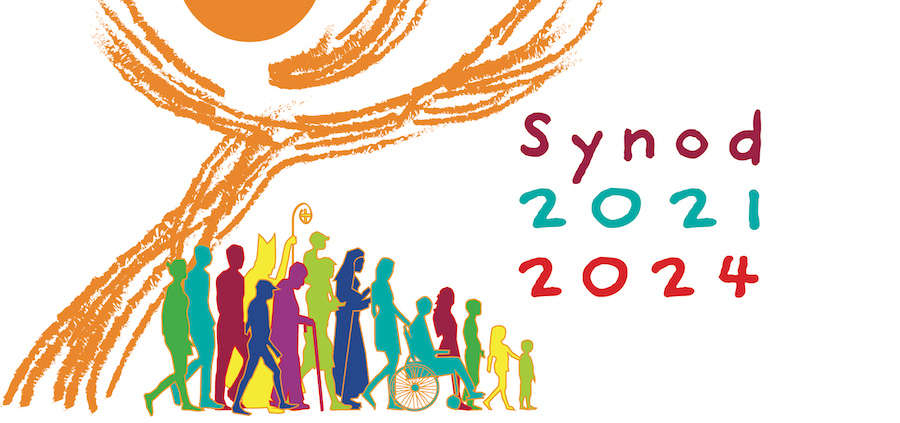From Solitude to Social Poetry: The Invitation of the Instrumentum Laboris
There is a scene in Pier Paolo Pasolini’s film The Hawks and the Sparrows (1966) where the two main characters, Totò and his son, Ninetto, are accosted by a talking crow on the outskirts of Rome. The crow begins telling them a story that takes place during the time of Saint Francis 750 years earlier. In a bit of meta-cinema, Totò and Ninetto find themselves recast as Franciscan friars within the crow’s story, and the film follows their exploits as they meet with Francis, who instructs them to “to go forth and preach to the birds . . . the hawks, who are aggressive, and the sparrows, who are humble.” The friars embark on their commission, enduring harsh weather, torment from local villagers, and outright boredom as they plant themselves in a field and pray for the birds’ conversion. When, at one point, “Fra Ninetto” asks his elder (now called “Fra Ciccillo”) why they are pursuing this “miserable life,” Ciccillo answers curtly: “To earn a place in heaven.”
I thought of this scene while reading the Instrumentum Laboris (IL) or working document for the universal phase of the synod this October. The document makes several references to the “ministerial Priesthood” that is conferred by the sacrament of holy orders as distinct from the “common Priesthood” that is the patrimony of all the baptized. Quoting from Lumen Gentium, the Instrumentum Laboris states:
Baptismal dignity is readily linked to a common Priesthood as the root of the baptismal ministries, and the necessary relationship between common and ministerial Priesthood is reaffirmed since they are “interrelated” with each one “in its own special way” being a “participation in the one Priesthood of Christ” (LG 10).
The two friars in Pasolini’s film embark on their “common Priesthood” in a way that is missing from the church today, and that our current moment desperately needs: with a boldness that is unafraid to look foolish as it blesses the hills and mountains, blesses the trees and rivers, blesses the birds of the air “that neither sow nor reap” (Matt 6:26) as they lend us a template for utter dependence on our heavenly Father. In a church where outdoor weddings are still frowned upon, and where canon law implicitly privileges the “sacred place” of a church building above the sanctity of the natural world in adjudicating open-air Masses, the movement toward a deeper ecological consciousness will have to come from a cohort of “common Priests” like Pasolini’s friars: those whose aptitude for the sacred extends beyond the precincts of the parish, the diocese, the institutional order, and who recognize that every attentive interaction with the world is a possibility for eucharist.
The “common Priest,” in this way, comes out of herself to lay claim to her own priestly gifts—particularly the gift of attentiveness, which, in the words of the poet Mary Oliver, “is our endless and proper work.” It is reflecting back to God what is God’s, with the love and joy that is the sign of the life in Christ. And it is deeply synodal, in the sense of listening to the Holy Spirit as a “protagonist” (IL 17) of life in communion with others, including other species. Such spiritual listening acquires a liturgical dimension (IL 35) by virtue of its prayerful disposition: like the liturgy itself, where we participate in the sanctification of an interval of time through invocatory speech and intentional gesture, so the experience of spiritual listening sanctifies an interval of space between those “hearing together . . . the gift of a meditated word nourished by prayer” (IL 33, 37).
In the end, this might be the greatest gift of the synod and Pope Francis’s most lasting legacy: the introduction of a new kind of listening that ritualizes our encounters with one another. This is accomplished, first, by recognizing our own “incompleteness” (IL 53) and subsequent need “to open up within [ourselves] a space for others and for the Other” (IL 38), and then allowing God’s grace to permeate this atmosphere of mutual hospitality. In attending to the movements, subtleties, and suggestions of the words we exchange, as in attending to the rhythms of the liturgy, we fall into an “awareness of our common mission in tune with the breath of the Spirit” (IL 54).
Pasolini was a committed Marxist who stayed in continual dialogue, as both an artist and a public intellectual, with the Catholic Church of his time. His portrait of Christ as a ragged, revolutionary mystic in The Gospel according to Matthew (1964) brought the spare poetry and earthy morality of Italian neorealism to the evangelist’s account (asked once why he chose to adapt Matthew over the others, he replied that “John was too mystical, Mark too vulgar, and Luke too sentimental”), and his screenplay on the life of Saint Paul remains one of the most tantalizing unrealized film projects of all time. With prophetic acumen, he said in the years following Vatican II that “The church can only survive if it continues to change and put into continual crisis its own institutionality.” He continued with a recommendation that sounds today uncannily similar to the synod convened by Francis: “The church will probably be able to continue for centuries to come if it creates an ecclesiastical assembly that continually negates and recreates itself.” Let us hope the synodal dynamic leads to such a rebirth, and that a new band of fearless friars and “common Priests” emerge to work and pray for the conversion of the earth. ♦
Michael Centore
Editor, Today’s American Catholic





Leave a Reply
Want to join the discussion?Feel free to contribute!